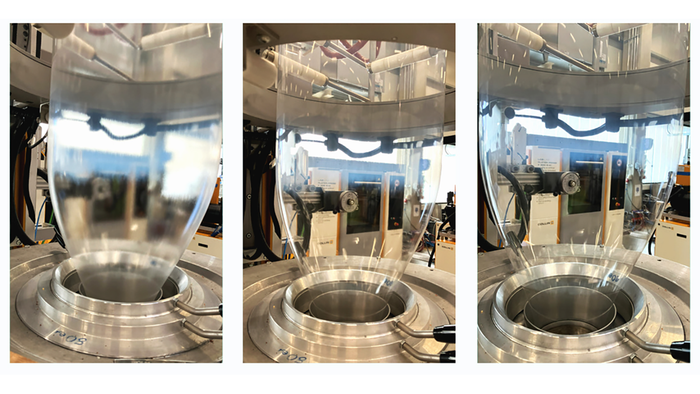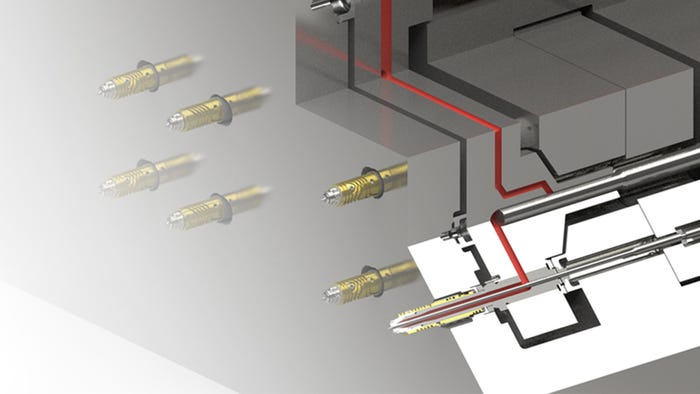
3D-printed Injection Molds Save Medical Device OEMs Time and Money - injection m
Author:gly Date: 2024-09-30
Fusible-core injection molding technology has been employed to mold a fuel housing for an aircraft using PEEK (polyetheretherketone) resin supplied by Victrex (West Conshohocken, PA). The solution reportedly delivers a 30% cost saving and up to 50% weight reduction versus existing metal designs.Processor Egmond Plastic was able to consolidate the number of parts using a carbon fiber reinforced grade of Victrex PEEK polymer. A separate bearing, for example, was eliminated since it is now integrated into the overall design of the housing.Fuel housing molded for CF-PEEK compound using fusible core process.Fuel housings for aerospace applications have very complex inner geometries which are not moldable using conventional injection molding technology. Egmond Plastic's fusible-core technology enables moldings of complex hollow housings, manifolds, and pipes. Richard Brandwijk, Managing Director at Egmond Plastic, explains: "Our technology, in combination with carbon fiber reinforced Victrex PEEK polymer, delivers numerous benefits. These include cost reduction, enhanced manufacturing speed, and weight reduction leading to improved fuel efficiency and reduced CO2 emissions. Along with part consolidation, this exceptional technology and material combination enables the design of very complex parts, beyond the capabilities of standard injection molding and metal processes."Utilizing a near net-shape manufacturing process for the fusible core allows for an 80% time saving versus machined parts. Further, secondary treatments for corrosion protection, such as anodizing, can be eliminated. Lead times can be reduced by 50%. These factors combine to deliver part cost savings of more than 30% versus metal equivalents."The global aerospace industry stands to gain enormously by persistently replacing metals in key applications, in which Egmond has demonstrated tremendous leadership," said Uwe Marburger, Aerospace Business Development Manager at Victrex. "Clearly, our PEEK knowledge and material solutions help enable the use of a technology that addresses some of the toughest challenges in complex aerospace part design and productions."Previously, the end-user had generally specified aluminum for the production of fuel containing parts, but a carbon fiber reinforced PEEK polymer demonstrated superior fatigue performance when compared to aluminum. It does this while meeting all the engineering requirements for this application, including stiffness, effective flame, smoke and toxicity (FST) performance, and resistance to aggressive chemicals, including notably, for this aerospace application, resistance to jet fuel and Skydrol hydraulic fluid. Parts can range in size all the way up to 30 cm x 30 cm x 40 cm (11.8 in x 11.8 in x 15.8 in), and typically the process is used for production runs of up to 2,000 parts.Egmond's unique fusible-core technology has already established a proven track record using Victrex PEEK in a fuel pump for the Eurofighter Typhoon, a jet fighter in use in several European countries. This pump has been in successful operational use for more than 20 years.
This article is sponsored by The Rodon Group, a company specializing in custom plastic injection molding and precision manufacturing solutions since 1956.
"Now more than ever, it’s imperative that we bring manufacturing back to the U.S.,” says Dave Steen, Rodon’s QC manager. "With Rodon’s state-of-the-art Class 8 cleanroom — now a Class B modular cleanroom — we can help do just that, not only for medical device, pharmaceutical, and food and beverage companies but anyone who needs a clean-environment part for secondary operations.”
"Rodon’s cleanroom is the latest investment in reshoring manufacturing in the critical healthcare supply chain,” explains Michael Araten, company president. "Rodon has been committed to American manufacturing for almost 70 years, and our team is excited to couple our ISO 13485 certification with our cleanroom to bring advanced precision manufacturing solutions to our customers.”
Fusible-core injection molding technology has been employed to mold a fuel housing for an aircraft using PEEK (polyetheretherketone) resin supplied by Victrex (West Conshohocken, PA). The solution reportedly delivers a 30% cost saving and up to 50% weight reduction versus existing metal designs.Processor Egmond Plastic was able to consolidate the number of parts using a carbon fiber reinforced grade of Victrex PEEK polymer. A separate bearing, for example, was eliminated since it is now integrated into the overall design of the housing.
The company uses FDA-grade materials and operates over 115 presses and robotic systems in its Hatfield, Pennsylvania, facility. In addition to cleanroom manufacturing, Rodon’s services range from toolmaking and mold design to high-volume custom injection molding.

The modular cleanroom utilizes an HVAC system with a HEPA filter, enabling Rodon to modify the room’s particulate level and class based on a project’s requirements. Clients can choose the cleanroom class that meets their needs and budget, ranging from Class 8 to a white space. Allowing for flexible equipment arrangement, Rodon can also scale operations up or down, fitting six to 15 injection molding presses in the room or incorporating additional work cells.
Building, certifying, and maintaining a controlled cleanroom environment in a manufacturing facility can be quite costly. To help clients capitalize on cleanroom manufacturing without investing that time and expense or having to send work overseas, The Rodon Group has built an ISO Class 8-capable cleanroom for its injection molding operations.


GETTING A QUOTE WITH LK-MOULD IS FREE AND SIMPLE.
FIND MORE OF OUR SERVICES:


Plastic Molding

Rapid Prototyping

Pressure Die Casting

Parts Assembly



